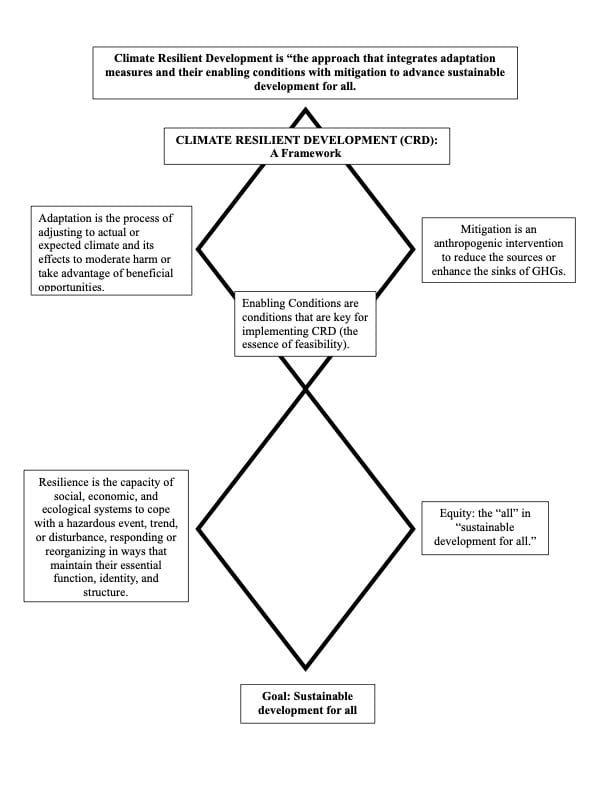Our world is in the midst of an unprecedented environmental crisis, marked by the escalating frequency and intensity of extreme weather events, rising sea levels, and shifting precipitation patterns. This dire situation underscores the critical importance of Climate Resilient Development (CRD) and the need for a framework to guide policymakers. This article and the workshop series affiliated with it addresses how global problems call for local solutions.
The IPCC Sixth Assessment WGII Report describes CRD as “an approach that integrates adaptation measures and their enabling conditions with mitigation to advance sustainable development for all”. This is a multifaceted concept that encompasses a wide range of actions and strategies aimed at building resilience to climate change while addressing questions of equity and systemic transitions across various domains, including land use, oceans, urban infrastructure, energy, industry, and society. CRD seeks to harmonize development choices with risk reduction and justice, integrating decision-making processes, finance, and actions across governance levels, sectors, and timeframes.
The Tenth Amendment of the U.S. Constitution reserves police power to the States, enabling them to protect and promote public health and safety. In New York, this police power is delegated to the State Legislature, which, in turn, grants land use authority to municipalities. This authority empowers local governments to adopt comprehensive land use plans and zoning regulations, which, when aligned with the local land use plan, shape development within their jurisdictions. This unique role places local governments at the forefront of addressing climate change. Notably, local governments have a rich history of climate planning, with the first Climate Action Plan (CAP) originating in Portland, Oregon, nearly thirty years ago.
One of the key strengths of local governments in the context of CRD is their ability to take a bottom-up approach. This approach allows communities to tailor adaptation and mitigation efforts to their specific needs and circumstances. Many challenges associated with climate change, such as financial constraints or public opinion, can be effectively addressed at the local level. Examples of CRD initiatives at the local level include climate-resilient retrofits, low- carbon construction practices, and the promotion of vegetated urban areas. These initiatives not only reduce vulnerability to climate impacts but also contribute to the broader goals of sustainability and environmental conservation.
The IPCC’s “Summary for Policymakers” (SMP) offers a comprehensive framework for CRD, exhibited by the graphic included below. With an emphasis on adaptation, enabling conditions, and mitigation, CRD framework makes a powerful tool for policymakers at all levels of government. By utilizing land use authority and the frameworks set forth by the IPCC, we can build a resilient, sustainable future.


This was beautifully written. I think you’re absolutely right, because no matter how much it gets pushed to an individual level in the grand scheme of things big changes need to happen.